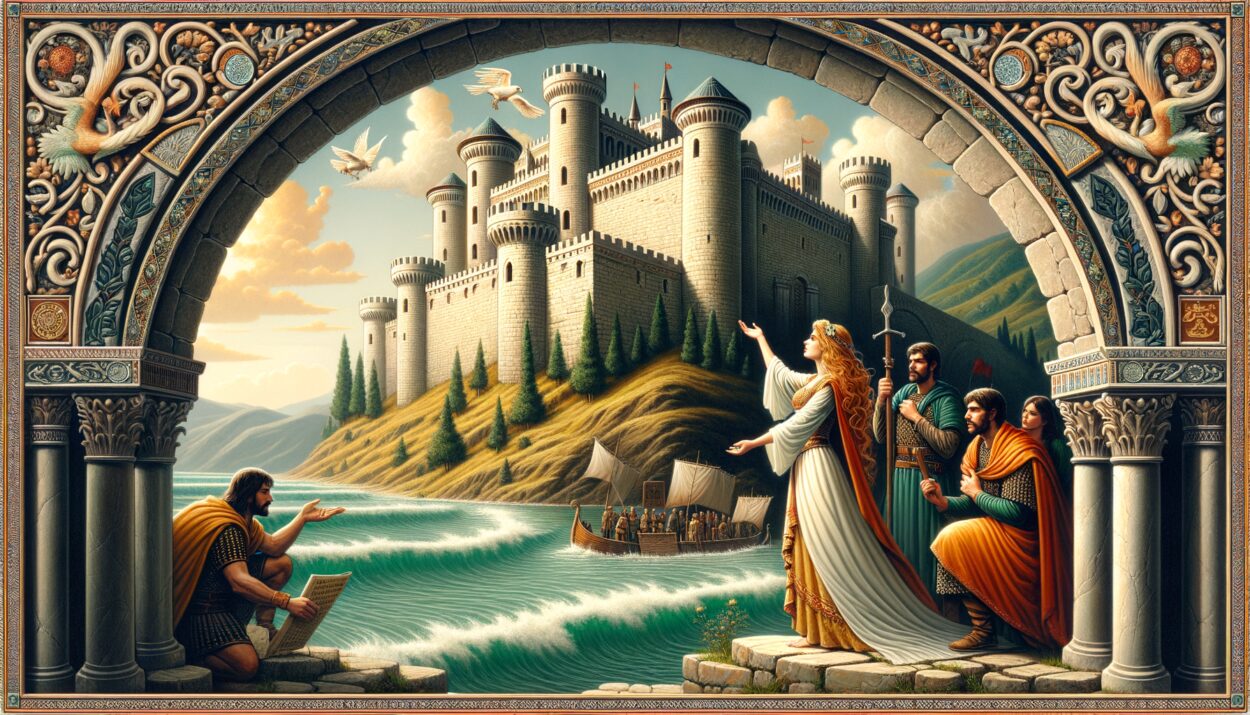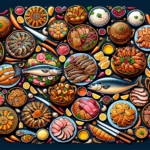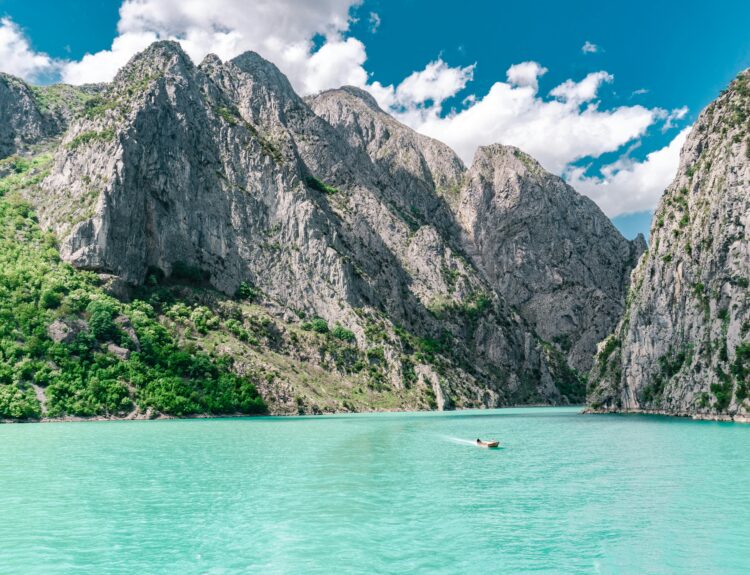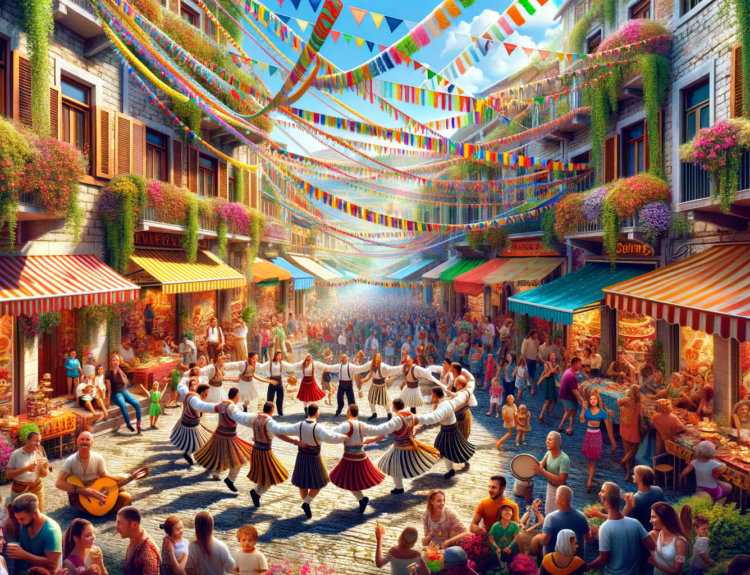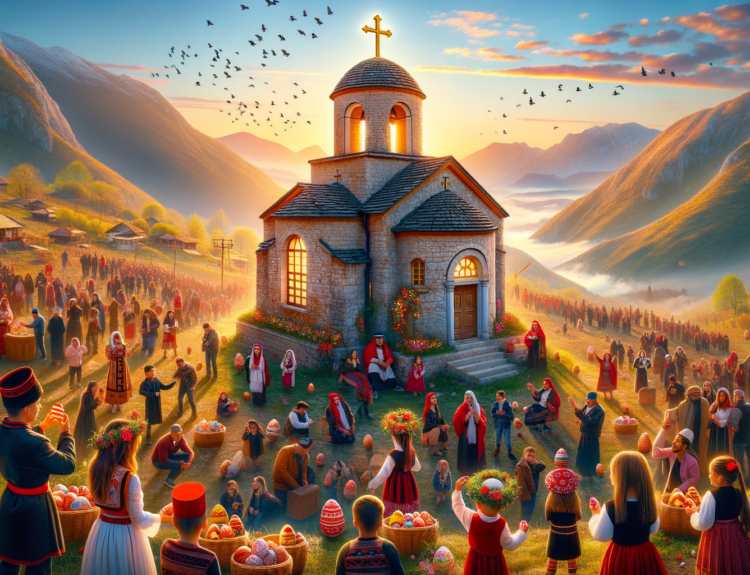In the heart of the Balkans, where the majestic peaks of the Dinaric Alps meet the azure waters of the Adriatic Sea, lies a land veiled in mystery and steeped in ancient traditions. Albania, with its tumultuous history and diverse cultural heritage, boasts a rich tapestry of myths and legends that have been passed down through generations. These tales, woven into the fabric of Albanian identity, offer a glimpse into the country’s collective imagination and provide a fascinating window into its soul. Join us on a captivating journey through the enigmatic realms of Albanian mythology as we explore the stories that have captivated the hearts and minds of its people for centuries.
1. The Legend of Rozafa Castle:
High above the city of Shkodra, perched atop a rocky precipice, stands the imposing silhouette of Rozafa Castle. This ancient fortress, steeped in legend and lore, has long been a symbol of strength and resilience for the Albanian people. According to local folklore, the construction of Rozafa Castle was plagued by mysterious forces, with its walls crumbling each night despite the tireless efforts of the builders. In a desperate bid to appease the spirits, it was decided that a human sacrifice was necessary to ensure the castle’s completion. Rozafa, the wife of one of the builders, volunteered herself for the sacrifice under the condition that her body be used as part of the fortress’s foundation, ensuring her eternal presence within its walls. To this day, visitors to Rozafa Castle can still see the exposed stones believed to be Rozafa’s form, a haunting reminder of the sacrifices made in the name of fortification.
Commentary: The legend of Rozafa Castle not only speaks to the resilience of the Albanian people but also serves as a poignant reminder of the enduring power of sacrifice and devotion. The fortress, with its ancient stones bearing witness to centuries of history, stands as a testament to the indomitable spirit of the Albanian people.
2. The Myth of the Osum River:
Flowing through the picturesque city of Berat, the Osum River is said to be home to a mystical creature known as the “Bolla.” According to local folklore, the Bolla is a giant serpent that lurks beneath the river’s surface, guarding hidden treasures and enchanting anyone who dares to gaze upon its shimmering scales. Tales of the Bolla have inspired awe and wonder among locals for centuries, with many still believing in its existence to this day.
Commentary: The myth of the Bolla adds an air of mystery and intrigue to the serene waters of the Osum River, inviting travelers to ponder the secrets that lie beneath its tranquil surface. Whether or not one believes in the existence of the mythical creature, the allure of hidden treasures and untold mysteries continues to captivate the imagination.
3. The Tale of the Eagle and the Serpent:
In Albanian folklore, the eagle is revered as a symbol of strength, freedom, and nobility, while the serpent represents deceit, cunning, and evil. One popular myth tells the story of a fierce battle between these two iconic creatures, with the eagle emerging victorious after a fierce struggle. As a reward for its bravery, the eagle is said to have been granted the ability to soar to great heights, while the defeated serpent was condemned to slither on the ground for eternity.
Commentary: The myth of the eagle and the serpent serves as a timeless allegory for the eternal struggle between good and evil, courage and deceit. It reminds us of the virtues of bravery and honor, as well as the consequences of treachery and deception.
4. The Legend of the Fjord of Fier:
Nestled along the rugged coastline of the Albanian Riviera, the Fjord of Fier is said to have been formed by the tears of a weeping maiden whose lover was lost at sea. According to legend, the maiden’s grief was so profound that her tears formed a deep inlet in the coastline, forever memorializing her sorrow. Today, the Fjord of Fier remains a symbol of lost love and enduring devotion, drawing visitors from far and wide to witness its haunting beauty.
Commentary: The legend of the Fjord of Fier captures the melancholy beauty of the Albanian coastline, inviting travelers to reflect on the power of love and loss. The enduring allure of this mystical landscape serves as a poignant reminder of the timeless nature of human emotions.
As travelers journey through Albania, they are invited to delve into the rich tapestry of myths and legends that have shaped the country’s cultural identity. From ancient fortresses to scenic rivers, each myth offers a glimpse into the soul of Albania, inviting visitors to explore its hidden depths and unearth the secrets of its storied past.
5. The Legend of Gjergj Elez Alia:
Gjergj Elez Alia is a legendary hero celebrated in Albanian folklore for his bravery, strength, and cunning. According to the tales, Gjergj was a fearless warrior who defended his people against invaders and tyrants, often using his wit and intelligence to outsmart his enemies. He is revered as a symbol of Albanian resistance and heroism, with many stories recounting his legendary feats and adventures.
Commentary: The legend of Gjergj Elez Alia embodies the spirit of Albanian resilience and courage in the face of adversity. His legendary exploits continue to inspire and captivate audiences, serving as a reminder of the enduring legacy of heroism in Albanian culture.
6. The Adventures of Muji and Halili:
Muji and Halili are two iconic characters from Albanian folklore, renowned for their mischievous antics and comedic adventures. Often depicted as bumbling fools, Muji and Halili find themselves embroiled in absurd situations and hilarious predicaments as they navigate the challenges of everyday life. Despite their shortcomings, their enduring friendship and unwavering optimism endear them to audiences of all ages, making them beloved figures in Albanian folklore.
Commentary: The adventures of Muji and Halili offer a lighthearted glimpse into Albanian culture and humor, showcasing the importance of laughter and camaraderie in everyday life. Their timeless escapades continue to entertain and amuse, bringing joy to audiences across generations.
7. The Tale of Argjiro:
Argjiro is a legendary figure from Albanian folklore, celebrated for her beauty, wisdom, and kindness. According to the tales, Argjiro possessed unparalleled grace and charm, captivating all who beheld her with her radiant presence. She is often depicted as a symbol of purity and virtue, with many stories recounting her noble deeds and selfless acts of compassion.
Commentary: The tale of Argjiro embodies the ideals of grace, compassion, and integrity, serving as a source of inspiration and admiration in Albanian folklore. Her timeless beauty and noble character continue to resonate with audiences, reminding us of the timeless virtues of kindness and compassion.
6. The Myth of Kostandin and Doruntina:
Kostandin and Doruntina are legendary figures in Albanian mythology, celebrated for their enduring love and devotion. According to the tale, Kostandin was a brave warrior who fell deeply in love with Doruntina, a beautiful maiden from a neighboring village. Their love was forbidden by their feuding families, who sought to keep them apart at all costs. Undeterred by the obstacles in their path, Kostandin and Doruntina vowed to defy tradition and be together.
Their love story is one of perseverance and sacrifice, as they braved countless trials and tribulations to be reunited. Despite the hardships they faced, their love only grew stronger with each passing day, inspiring all who heard their tale.
Commentary: The myth of Kostandin and Doruntina embodies the timeless themes of love, loyalty, and resilience. Their story serves as a reminder of the power of love to overcome even the greatest of obstacles, inspiring hope and optimism in the hearts of all who hear it.


